14W - 21W

Alone in the Dark was provided by THQ Nordic for review. Thank you!
While there are many games in the survival horror genre that are prominent now, none of these would exist without Alone in the Dark. The original's 1992 release is heralded as the first 3D horror game, with some even going as far as saying it was the first survival horror game overall. It set the standard for future games in the genre, with gameplay elements like limited inventory space, non-linear level design, and puzzle-solving with clues to find around the area. Now, in 2024, the game is back, and while there are some memorable moments that make it an enjoyable time, it ultimately falls a bit short of being toe-to-toe with the games the original has inspired.
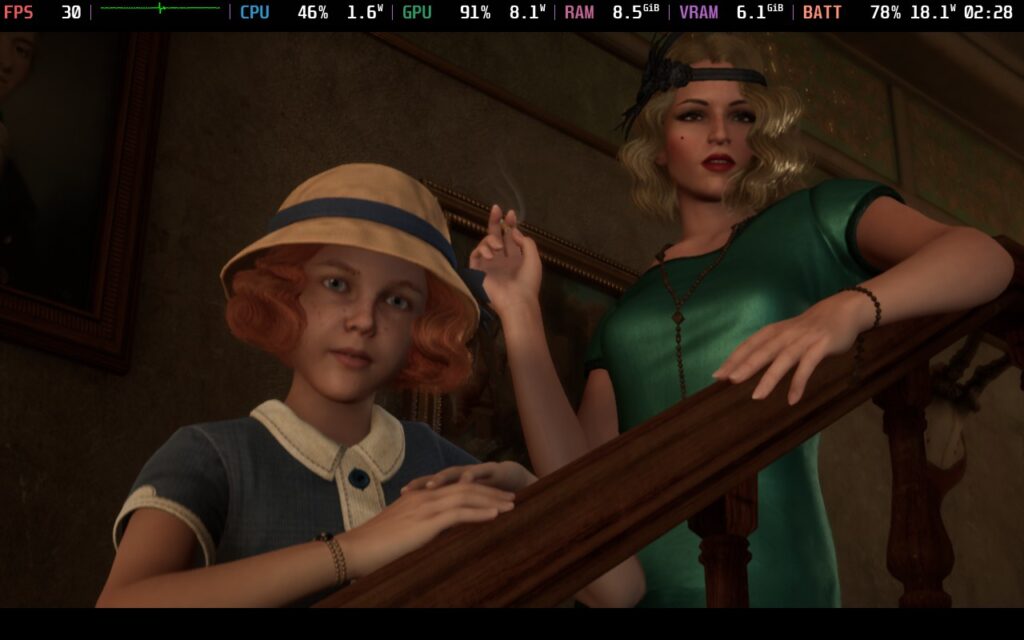
While the story does take inspiration from the original release, with similar characters and settings, the story has been largely expanded upon. Edward Carnby, a private investigator, was hired by Emily Hartwood to figure out where her uncle, Jeremy Hartwood, had disappeared. They come to Derceto Manor to find him and end up embarking on one of Carnby's toughest cases yet, filled with supernatural horrors and eldritch nightmares. The supernatural elements of the narrative are captivating, and I enjoyed how the world would change and go immediately from the mansion to a graveyard or a hallway filled with vines crawling on the walls. I liked how fast it would happen, and it highlights the horrors happening around you, even if they aren't all scary at times.
In Alone in the Dark, you have the choice of playing as Edward or Emily, each having a separate-ish viewpoint that will culminate and piece together the larger picture of the game. I ended up enjoying the overarching story, even if it felt unsurprising at times, and I really liked Edward's storyline and the subplot that you discover later on. As for Emily, it felt very similar to Edwards in terms of locations, puzzles, and enemies. Some cutscenes are a bit different, and the way everyone talks to her is different than Edward's, but it largely feels the same and leads to a similar conclusion.
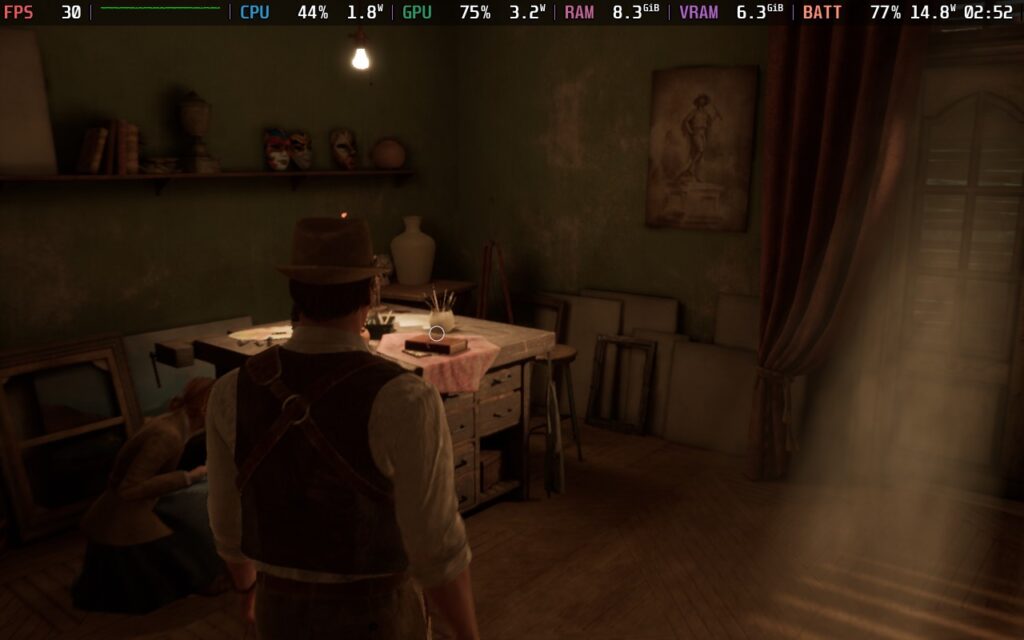
The gameplay has been refined and fits more in line with traditional survival horror games today, but focuses more on the mystery and puzzle-solving over fighting and surviving. You play in a third-person view and walk/run around to find clues to solve puzzles and unlock more areas of the mansion. While there is some light hand-holding to guide you for some of the puzzles, and you do have objectives that can hint at where to go, a lot of puzzles don't have obvious explanations, and you will need to look at past clues you pick up and intuition to figure out how to solve it. I love this aspect, as there is a nice sense of accomplishment as you complete each one and move along, but there are some puzzles that can feel a bit difficult and can take a while to figure out (I'm looking at you, Boiler Room Plates).
As you run through Jeremy's memories, you may encounter creepy, morphed enemies that you will either need to sneak past or put down. You do have three different guns and can pick up physical weapons to swing their way, too, but ultimately, I would choose to sneak around whenever I could. The combat mechanics feel a bit lacking in depth and weight, and I found myself easily cornered by enemies and dying consistently while trying to aim or flail my arms around. You can also pick up some items that may be lying around the level, but in the end, it doesn't make up for the light combat that I ended up just wanting to avoid whenever I could.
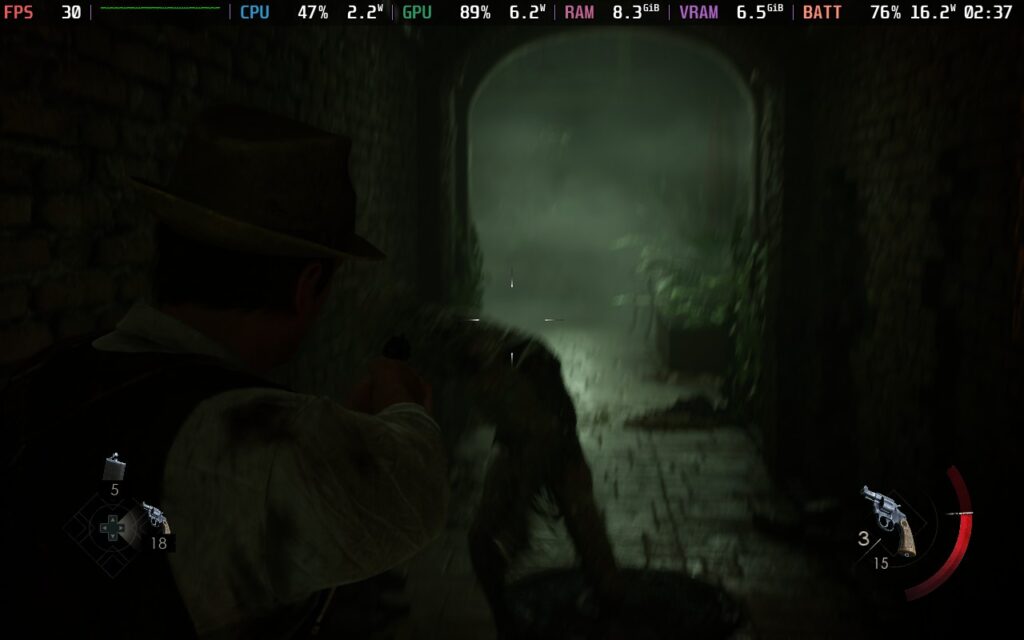
The gloomy, gothic visual-style mixed with the eery sound effects do create an unnerving atmosphere that fits perfectly with the overall theme of the game, and I loved the variety of landscapes that you could encounter. From ancient-looking libraries to family crypts and even the different parts of the mansion, it all came together very well and kept me engaged while wanting to see what else was waiting for me. And, while it needs some compromises, it does run quite well on the Steam Deck.
Alone in the Dark does play very well on the Steam Deck, albeit with some compromises to visual quality, but there are still some persisting issues that can temporarily hinder performance. The biggest one is when moving to new areas. The way the game loads in the areas can cause some drops, regardless of settings, so you will see some minor stuttering for 1-2 seconds and higher battery drain when entering new areas or when the entire room changes. This is mitigated a little when opening doors in the manor, since you will stand there for a moment before opening the door, but it still happens.
There are some smaller ones here and there, like the mouse cursor appearing in the middle of the screen when inspecting clues, but they don't directly impact how the game looks or feels.
There are two configurations I would recommend for Alone in the Dark, and for the recommended, I ended up siding with the more stable and better-looking 30 FPS build. Using high and some medium quality settings and no FSR, we can push 30 FPS throughout the game, except for those loading area drops. This gives us a crystal clear image that looks amazing on the Steam Deck, and due to it being a lower framerate, it also feels a bit more stable.
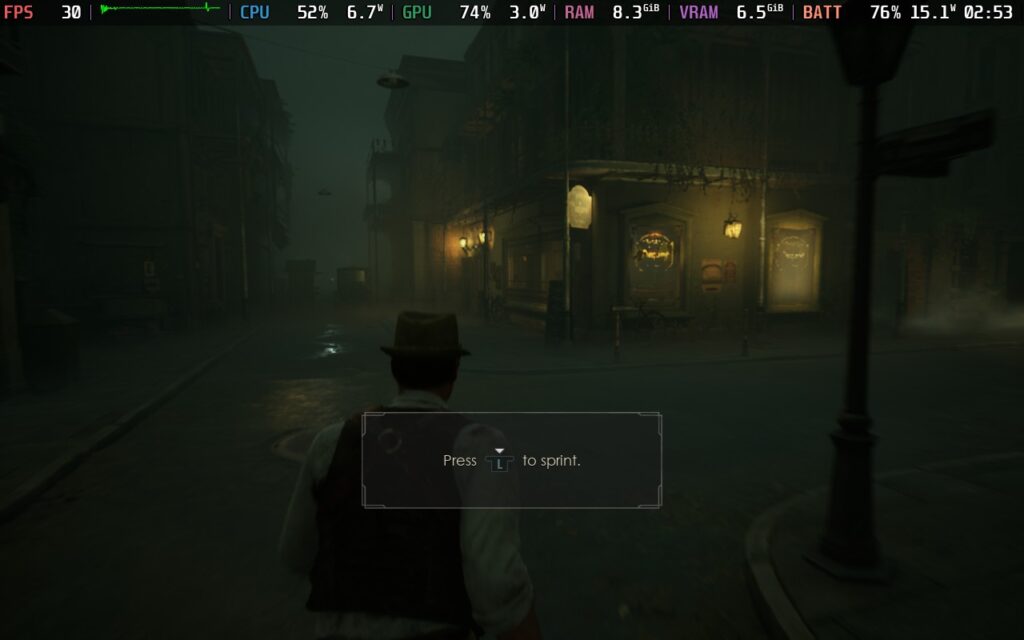
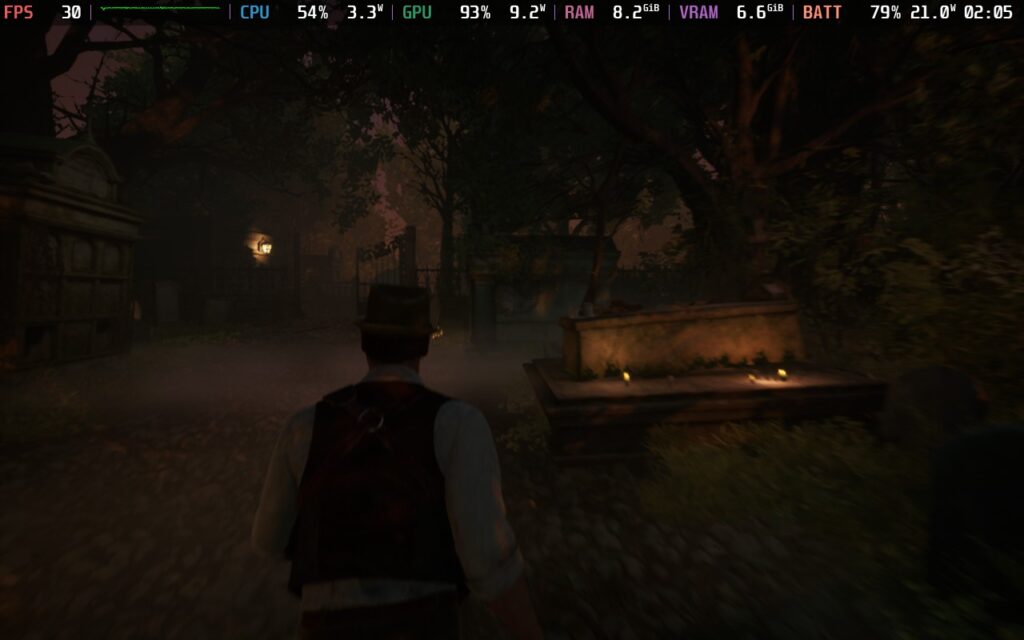

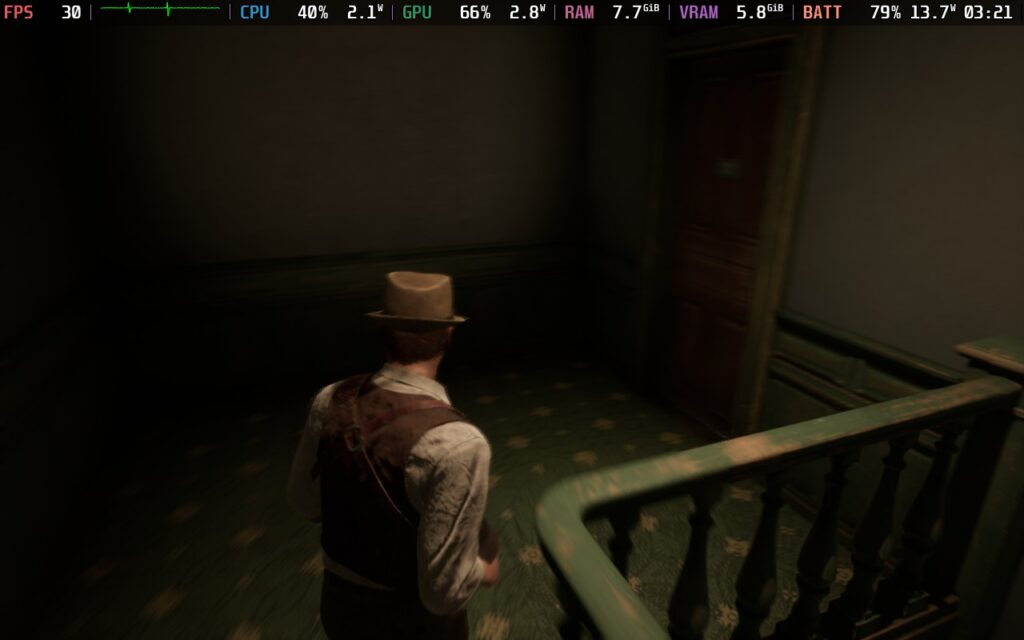
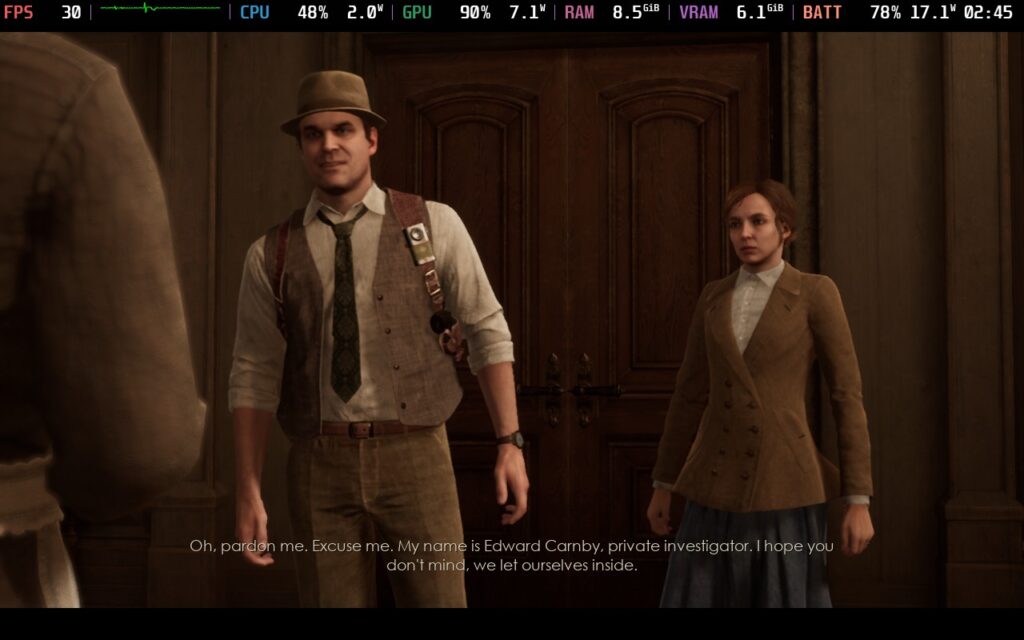
Then, we have the 40 FPS Build. This uses more medium settings and some high, while turning FSR on to Quality mode. This can make the game look a bit grainy, which I wasn't a huge fan of, but it does allow us to hit 40 FPS pretty often. There are parts of the game that can go higher, but there are some harder-to-handle areas that need a lower framerate unless you are willing to sacrifice visuals even further. I wouldn't recommend it, though, and I think this is the best balance for a good framerate and okay-looking visuals.
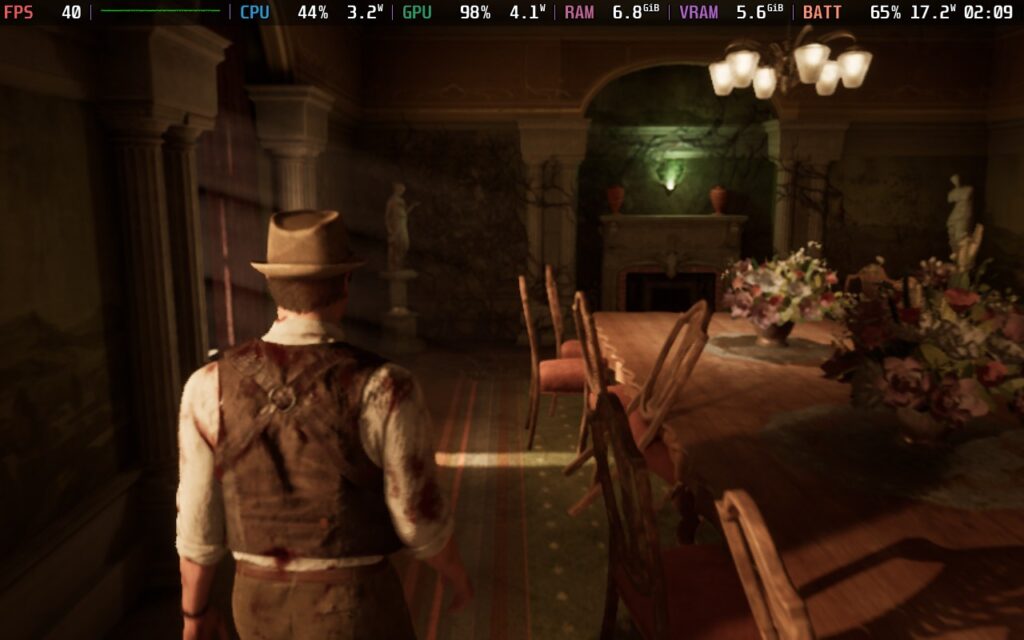
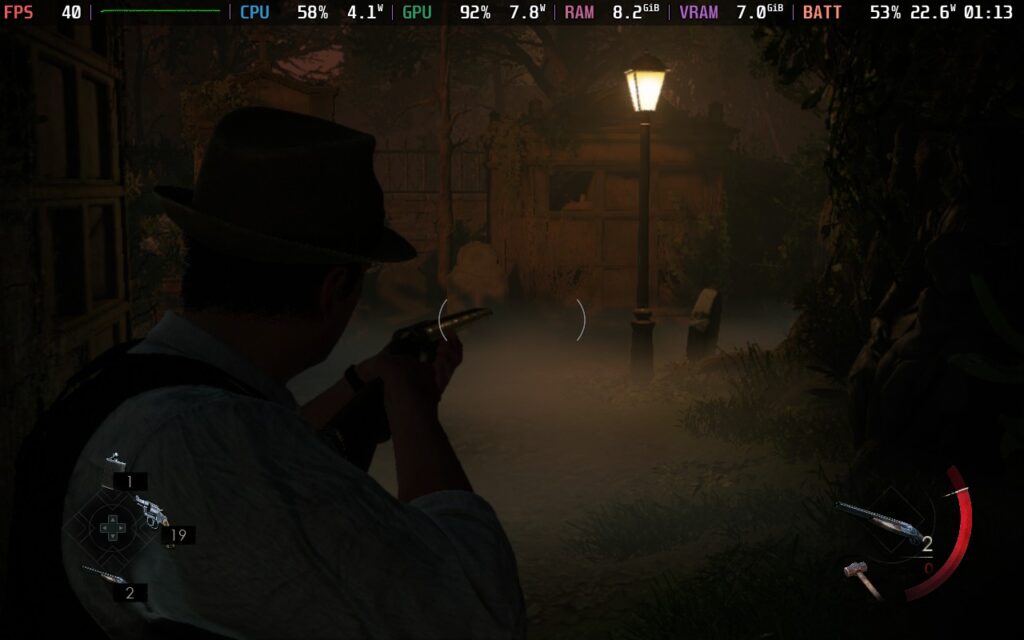
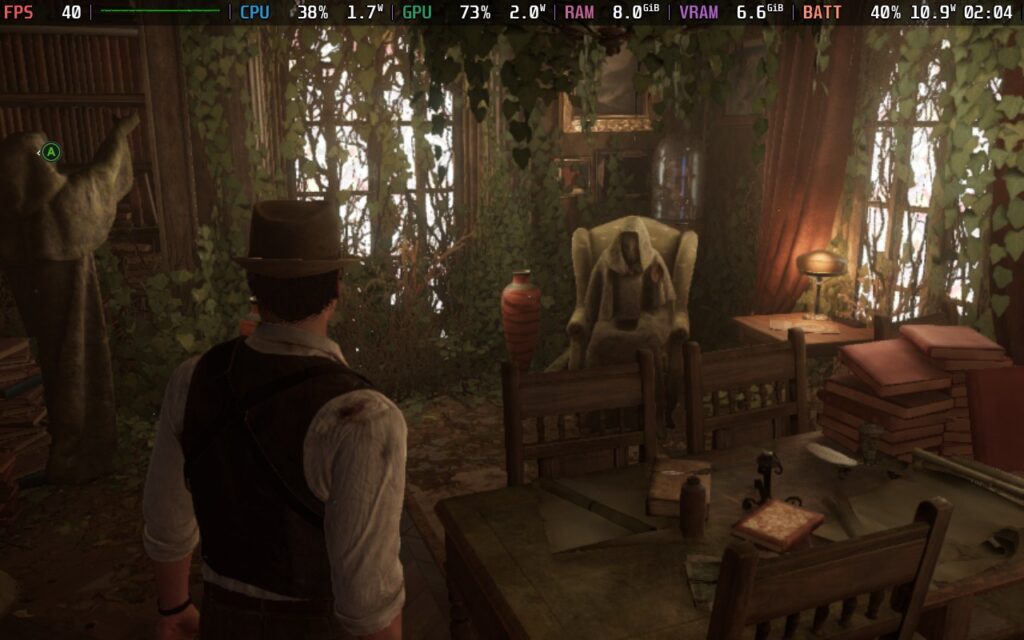


As for accessibility, we have the ability to change camera shake, controller vibration and tutorial toggles, changing difficulty on the fly, dynamic objectives and map/text highlighting, toggling running, aim sensitivities, sound bars, language, and subtitle size. You can also turn off Motion Blur.
The game supports 16:10 resolutions, so you won't have to worry about black bars. It also has both cloud saves and controller support. While it does have an HDR (High Dynamic Range) option in its settings, it doesn't work on the OLED.
Alone in the Dark left a conflicting taste in my mind. I enjoyed the story, the atmosphere, and Edward's storyline, but I felt the combat, some of the puzzles, and Emily's storyline were lacking on multiple fronts. Yes, it could have been better overall, but it was an enjoyable experience nonetheless. It succeeds in creating a thrilling and intriguing supernatural story, even if it wasn't the scariest, and puzzles can feel especially rewarding to complete since there is little hand-holding.
Thankfully, it is optimized quite well for the Steam Deck, even if it has little quirks here and there. I am happy to say I can highly recommend playing it on the go, and with how much of it I played on my plane rides as I went to GDC, I can say it is a lot of fun to experience in the palm of your hands.
Our review is based on the PC version of this game.
If you enjoyed this review, be sure to check out the rest of the content on SteamDeckHQ! We have a wide variety of game reviews and news that are sure to help your gaming experience. Whether you're looking for news, tips and tutorials, game settings and reviews, or just want to stay up-to-date on the latest trends, we've got your back.
Alone in the Dark is a solid reimagining of the original 1992 release, and it plays very well on the Steam Deck!

No Forced Compatibility
FSR: Off
Volumetric Quality: High
Ambient Occlusion: High
View Distance: Medium
Detail Setting: High
Particles Quality: High
Screen Space Reflections; High
Subsurface Scattering: High
Shadow Quality: Medium
Post-Processing: High
Texture Quality: High
Anti-aliasing Quality: High
Shader Quality: Medium
Effect Quality: High
Foliage Quality: High
Anisotropic Filtering: x4
Limit
40
Refresh Rate
80
HRS
NO
TDP Limit
No
Scaling Filter
Linear
GPU Clock
Disabled
No Forced Compatibility
FSR: Quality
Volumetric Quality: High
Ambient Occlusion: High
View Distance: Medium
Detail Setting: High
Particles Quality: Medium
Screen Space Reflections; high
Subsurface Scattering: High
Shadow Quality: Medium
Post-Processing: Medium
Texture Quality: Medium
Anti-aliasing Quality: Medium
Shader Quality: Medium
Effect Quality: Medium
Foliage Quality: Medium
Anisotropic Filtering: x2
14W - 21W
70c - 75c
2.5 - 3 hours